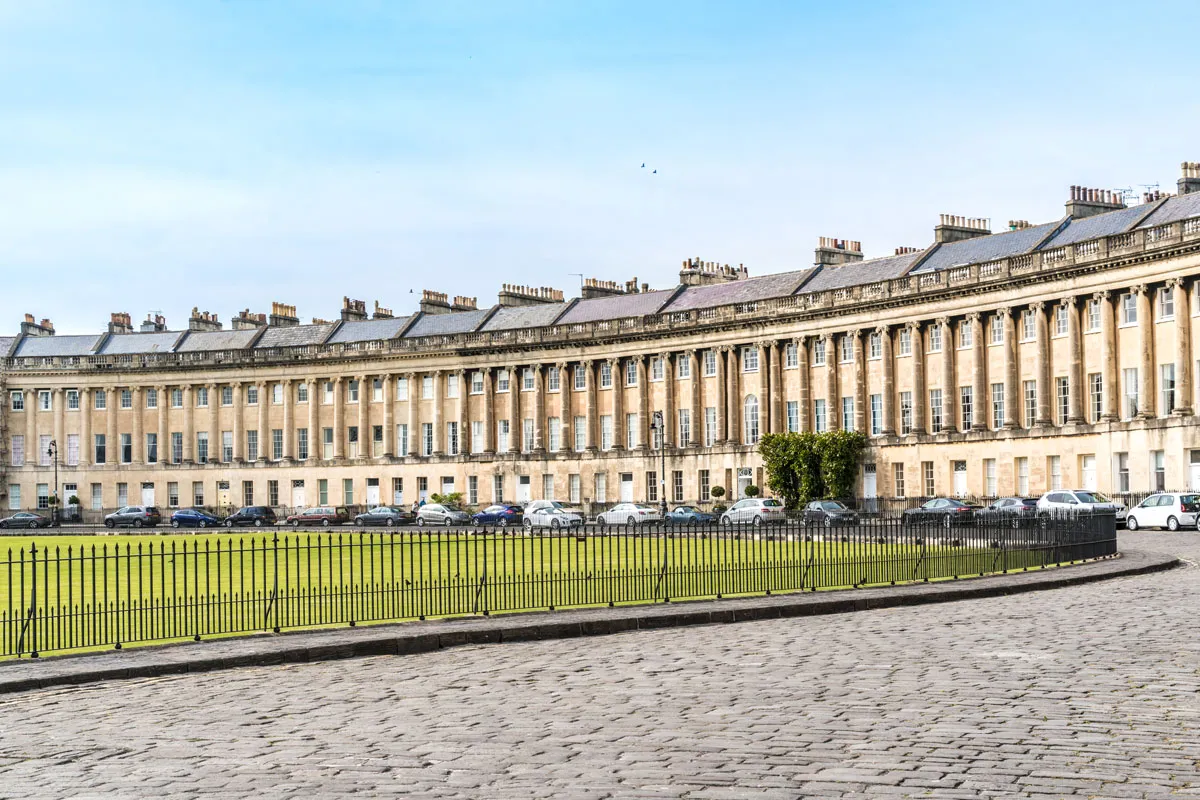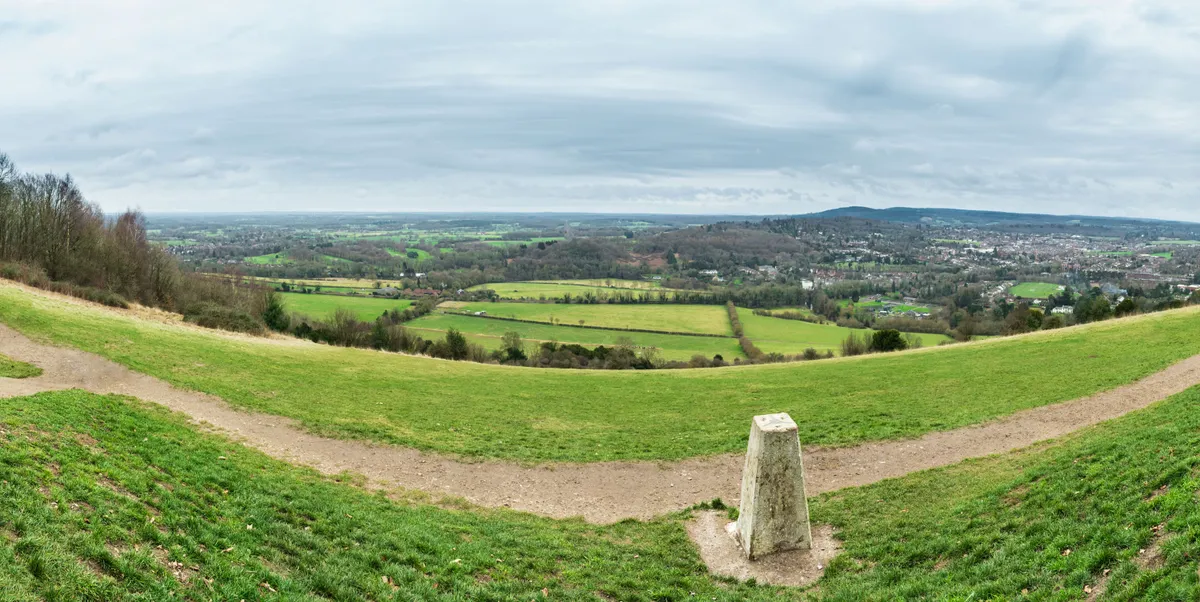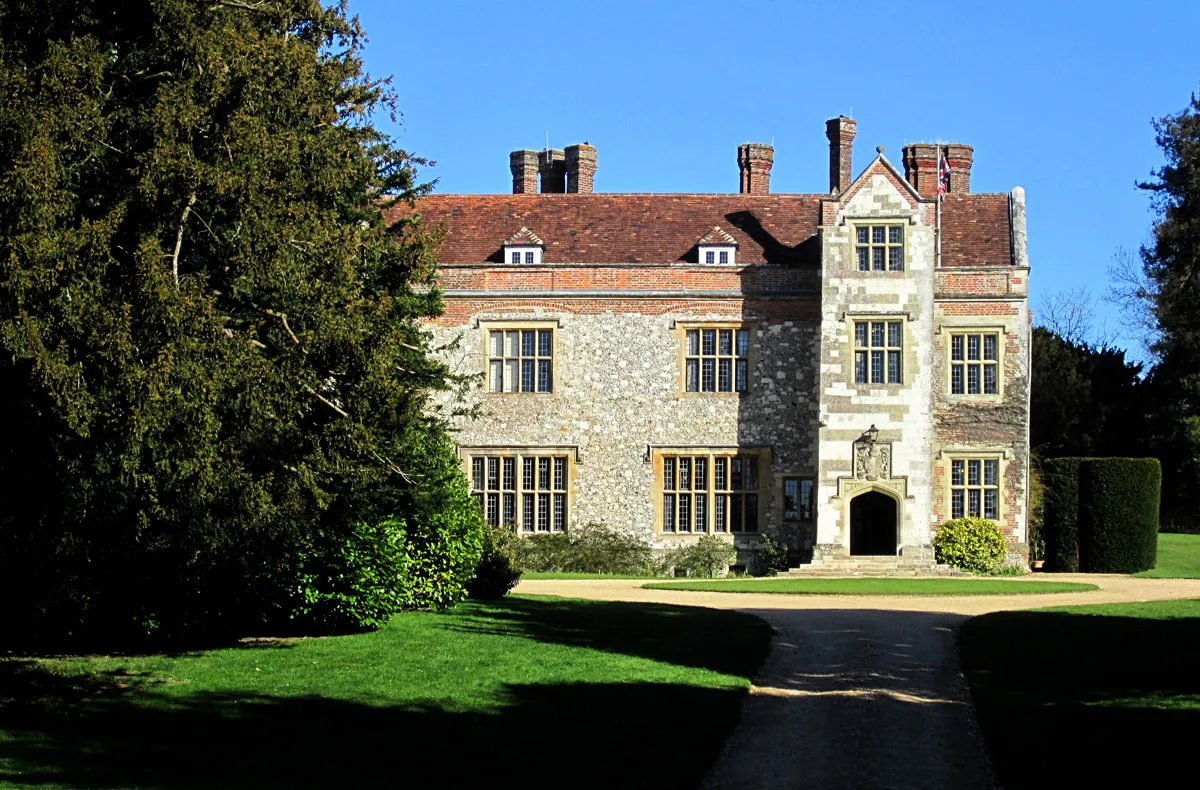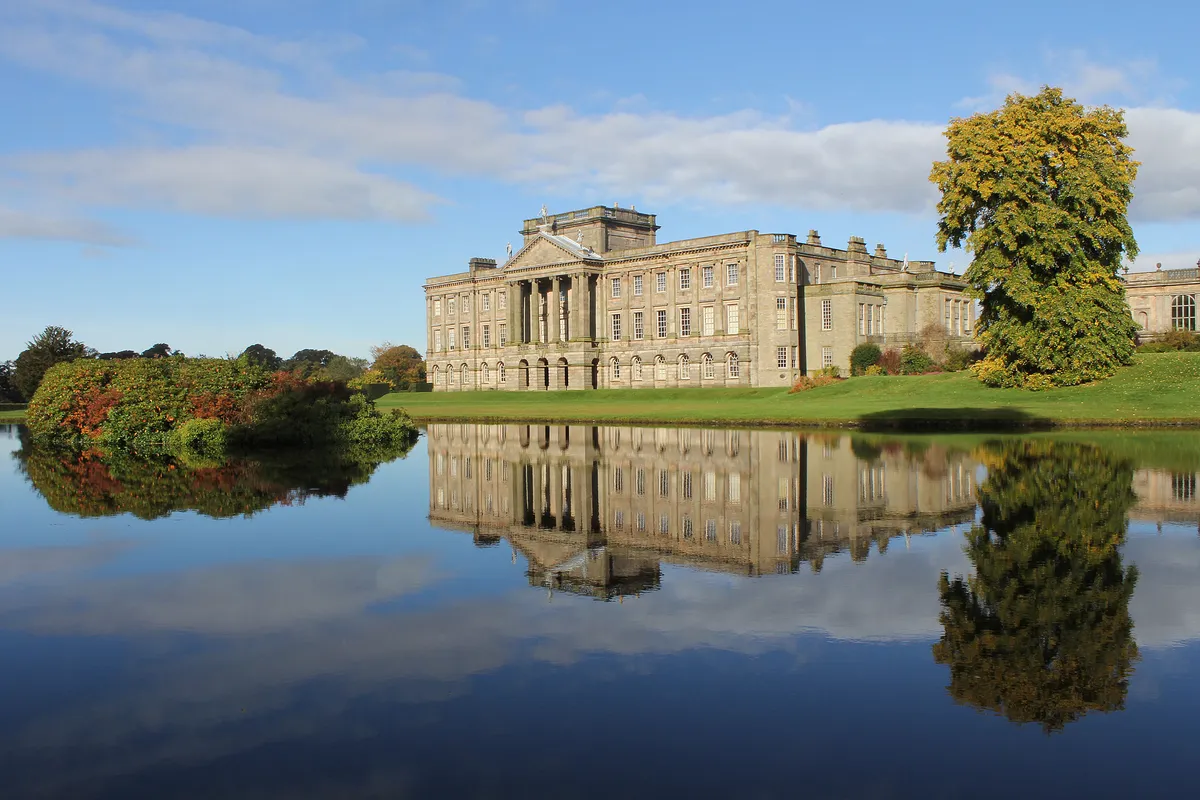This year marks 250 years since the birth of Jane Austen, one of England's most beloved novelists. Here is our expert Jane Austen guide by historian Lucy Worsley, which looks at her family history, locations that inspired her novels and places you can visit.
- "We are all fools in love": The best Jane Austen quotes, one of our literary greats, that capture her sharp wit and humour
- Best romantic UK film locations to stay in
Who was Jane Austen?
Jane Austen is the queen of English wit and satire, and author of the nation’s beloved classic novels, including Pride and Prejudice, Sense and Sensibility and Emma. Her characters converse in parlours and gallivant across the land, but what was her life like?
When was Jane Austen born?
Jane Austen was born on 16 December 1775.
A short history of Jane Austen's life
At first sight, it looks like just another empty, grassy field. But you’ll often see cars parked near the Hampshire village of Steventon, and people peering longingly into this particular field through its hedge. They’re looking for the remains of Steventon Rectory, birthplace – and home for the first 25 years of her life – of Britain’s best-loved novelist.
The remains of the Austen family’s water pump are still visible, and when the sun falls low, you can see the lines of garden terraces in the slope of the hill. But the site has recently given up many more secrets to a team of courageous volunteers, whose archaeological investigation has revealed just how deeply Jane Austen’s life (1775-1817) was embedded in the Hampshire countryside.
Jane’s father did not make quite enough money, as the local rector, to live in the style of a gentleman. So he also used his rectory as the headquarters for a farming business. Far from growing up in a grand country house, like the ones we know from the feature films of her novels, Jane herself was expected to help in the dairy, where cheese was made from the milk of her mother’s herd of little cows. And the rhythms of the farming year echoed through her life: the buying of sheep, the harvest home, the pickling of the gluts from the kitchen garden. “Good luck to your jamming!” wrote a friend in the margin of one recipe for preserves in the Austen family’s cookbook.

Did Jane Austen ever marry?
But when Jane was 25, and still unmarried, her father decided he would move the family to the city of Bath. He was getting too old to run the farm, and he needed to find husbands for his daughters, to support them after he was dead. Among the hard, bright-white stone pavements and streetscapes of Bath, Jane moped and pined for the countryside. Now she had to pay sixpence merely to visit the pleasure gardens, where she spent as much of her time as possible. “Yesterday was a busy day with me,” she wrote after one visit, “or at least with my feet… I was walking almost all day long.”

Jane Austen's seaside romance
One advantage, though, of not having the livestock to tie them down, was that the Austen's could now go on holiday to the seaside. Until the late Georgian age, you wouldn’t have actively sought out the sea; it was wild and dangerous. But now the increasingly urban lives of families like the Austen's encouraged them to enjoy the contrast provided by sea-bathing, or walking in beautiful scenery. They even started to appreciate bad weather, which could of course be sublimely beautiful as well as inconvenient.

Jane stayed a couple of times in Lyme Regis, the former port now turning into a resort. She once described herself as a ‘desperate’ walker, so she was in her element following the Dorset coast to the neighbouring village of Charmouth, swimming in the sea, and dancing in Lyme’s Assembly Rooms. I believe that she was happiest when she was away on holiday like this, living in lodgings, away from a home where the duties of a spinster daughter were many (and unpaid). Lyme Regis, the seaside, were places for romance, and there are hints that it was on a seaside holiday that a rather mysterious but important relationship in Jane’s own life unfolded. And that’s why in her novel Persuasion, Lyme Regis is a place for falling in love.

It’s harder to prove exactly which other real-life places inspired Jane’s novels, so carefully did she fictionalise her world. The beautifully observed country outing to Box Hill in Surrey, which Jane Austen describes in Emma, was surely inspired by the real place. It’s more difficult to prove, although it’s likely, that the Gardiners’ tour of the Peak District in Pride and Prejudice was inspired by a visit Jane paid to a cousin in North Staffordshire, and that the up-and-coming Georgian seaside resort of Worthing inspired the incomplete novel Sanditon that Jane was working on at the time of her death.
Hampshire homecoming
When Jane’s father died in Bath in 1805, she and her sister were thrown into financial crisis. Now they had to live on charitable handouts from their brothers. They lived a makeshift life in a succession of temporary lodgings, until their richest brother offered them a cottage rent-free in the Hampshire village of Chawton. This homecoming to her native county allowed Jane to feel settled enough to produce the three great novels of her maturity: Mansfield Park, Emma, and finally, Persuasion, the last novel she completed before her horribly early death, at the age of just 41.

People familiar with the feature films of the books might think of Jane Austen, wrongly, as the author of ‘chick lit’, always telling stories in which boy meets girl. In reality, she’s much more subtle than that. She reveals, among other things, how her characters react to the problems unfolding in the Georgian countryside. The Napoleonic Wars lasted for most of Jane’s lifetime, pushing up the price of grain, and making it desirable for landowners to inclose their fields, fertilise their soil and keep out both the people and animals who had wandered freely there before. To enclose meant to put up a fence, but to inclose was to change the land’s legal status, removing former rights to graze or forage. This deprived many poorer people of their traditional sources of food. Hints of this painful change in countryside life would pop up time and again in Austen’s novels, from the man who mends a hedge (the symbol of inclosure) in Mansfield Park, to the hungry gypsies who might have stolen Highbury’s poultry in Emma. We can always judge Jane’s male leads, who are largely landowners, by how generously they treat their landed estates and workers.

How Jane Austen's love of the countryside inspired her work
During her second long spell of living in Hampshire, enjoying the countryside and nature once again became important for Jane. She and her sister Cassandra might walk a mile to the shops at the nearby town of Alton, or take advantage of their access to her rich brother Edward’s house, just up the road, where they “liked to stroll about the grounds – sometimes to Chawton Park – a noble beech wood, just within a walk”. Sadly, these woods had to be sold off as the family faced financial problems and even the growing success of Jane’s novels did not earn her very much money of her own before, in 1817, she had to move to Winchester for medical treatment.

In 1942, one Jane Austen historian spoke to a Mrs Luff of Alton, whose grandmother could recall, as a little girl, hearing “the grown-ups” talking about Jane Austen and her life in Chawton. What Mrs Luff’s grandmother clearly remembered was the description they’d given of Jane Austen in the act of “running across the field to call on her friends”.
This last hint of Jane from a memory-chain of local people is telling. Yes, what they recalled was the author not at her desk, but running through her beloved Hampshire fields.
When did Jane Austen die?
Jane Austen died on 18 July 1817.
How did Jane Austen die?
Jane Austen died at a relatively young age of 41, following an undetermined illness. The two main hypothesis are that she died either from Addison's or Hodgkins disease, although this is often disputed. Experts have also speculated that her early death was partly caused by accidental arsenic poisoning.
Best Jane Austen attractions and locations in the UK
From her Hampshire home to the real-life places that appear in her novels, there are plenty of places to visit that either inspired Jane Austen or have appeared as filming locations. Here are just six of them.
St Nicholas Church, Hampshire
At first sight, it looks like just another empty, grassy field. But you’ll often see cars parked near the Hampshire village of Steventon, and people peering into this field through its hedge. They’re looking for the remains of Steventon Rectory, birthplace – and home for the first 25 years of her life – of Britain’s best-loved novelist. The remains of the Austen family’s water pump are still visible, and when the sun falls low, you can see the lines of garden terraces in the slope of the hill.
Constructed in the 12th century, St Nicolas Church lies half a mile from the centre of Steventon village. Memorials to the Austen family can be seen in the church and the churchyard.

Jane Austen's House Museum, Hampshire
Jane adored the countryside of her native Hampshire so much that she “would sometimes say she thought it must form one of the joys of heaven”. From her first home in Steventon, she would walk the lanes to visit friends in other clerical families, or up the high street to the coaching inn to pick up the post.
The novelist’s home from 1809 until 1817 is where Austen produced three of her major novels. Today, the museum has Austen artefacts on display, and features events and exhibitions. It's also occasionally used for filming, such as BBC One's period drama about Jane and her family, Miss Austen.

Lyme Regis, Dorset
Jane stayed in Lyme Regis a couple of times, the former port now turning into a seaside resort. She once described herself as a ‘desperate’ walker, so she was in her element following the Dorset coast to the neighbouring village of Charmouth, swimming in the sea, and dancing in Lyme’s Assembly Rooms.
Austen's Persuasion was set in Lyme Regis. Walk along the Cobb, a recognisable location from the novel, and take a walk to the blue plaque above Pyne House on Broad Street – the most likely residence of the Austen's during their time in Lyme.

Pemberley Walk, Lyme Park, Cheshire
While Austen may not have visited herself, Lyme Park has been etched in viewers’ minds as 'Pemberley' since the BBC’s famous adaptation of Pride and Prejudice.
Built in the 16th century, Lyme Park is surrounded by stunning views and glorious countryside. Follow in the footsteps of Mr Darcy around the formal gardens, and explore the wider grounds, picnicking beside the lake with the classic Pemberley view.

Box Hill, Surrey
It’s hard to prove exactly which other real-life places inspired Jane’s novels, so carefully did she fictionalise her world. However, the beautifully observed country outing to Box Hill in Surrey, which Jane Austen describes in Emma, was surely inspired by the real place.
Box Hill offers a variety of walks, from a gentle stroll to an eight-mile hike. The riverside walk takes you through unusual grassland and ancient woodland, and walkers can witness some unique second World War II structures.

Bath, Somerset
Take to the streets and explore the spaces and places of Bath that inspired, influenced and housed the great Jane Austen. Despite the beauty and fashionable society, her years in Bath were her least productive with regard to writing. She did, however, enjoy her time there, participating fully in Bath life and later setting her third novel Northanger Abbey in the bustling, gossiping scenes of Bath’s high society.

The world's most famous Jane Austen festival takes place in Bath each September. It will take place on Friday 12-Sunday 21 September in 2025. The festival begins with a costumed promenade, plenty of events throughout the city, and it culminates with a costumed ball.
Join Tiffany Francis on a literary tour of Bath, home of the 18th-century novelist Jane Austen.

Discover more literary locations
